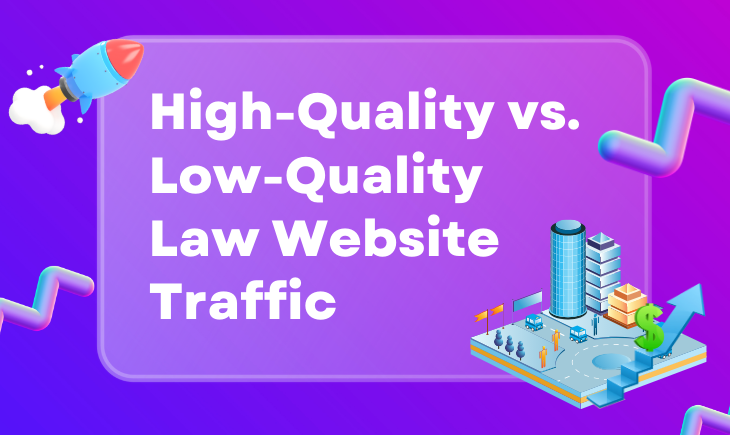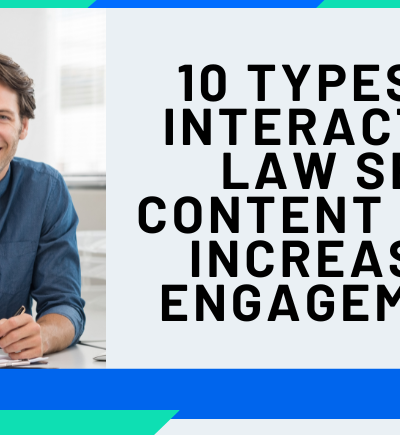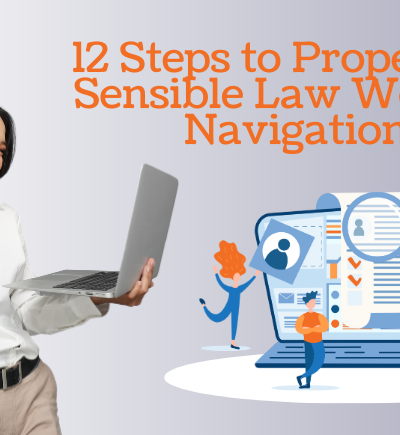In the vast ecosystem of personal injury law digital marketing, especially for specialized professions such as law, understanding the nature of your website traffic is paramount. But what distinguishes high-quality traffic from low-quality traffic, and why does it matter for your law website? Let’s dissect the differences.
Definition
1. High-Quality Traffic
It refers to website visitors who have a genuine interest in your legal services, are actively seeking legal assistance, or are looking for information related to your services. These visitors are more likely to engage with your site, request consultations, or become clients.
2. Low-Quality Traffic
It refers to visitors who end up on your website but are not particularly interested in legal services or are looking for something unrelated to your offer. Their interaction with the site is often limited, leading to higher bounce rates and minimal engagement.
Source of Traffic
1. High-Quality Traffic
It typically comes from targeted campaigns, well-optimized search terms, relevant backlinks from authoritative websites, and high-quality content marketing that resonates with the legal audience.
2. Low-Quality Traffic
It often stems from irrelevant or misleading advertising, non-specific keywords, purchased traffic, or unintentional search engine rankings for unrelated terms.
Engagement Metrics
1. High-Quality Traffic
These visitors stay longer on your site, visit multiple pages, download resources (like e-books or case studies), sign up for newsletters, or fill out contact forms.
2. Low-Quality Traffic
It is characterized by high bounce rates, where visitors leave the website soon after landing, minimal page views, and little to no interaction with the site’s content or calls to action.
Conversion Rates
1. High-Quality Traffic
It results in higher conversion rates since these visitors are actively interested in your services. Conversions might include booking a consultation, subscribing to a legal blog, or seeking representation.
2. Low-Quality Traffic
It leads to lower conversion rates due to the lack of genuine interest in the website’s offerings.
Impact on ROI
1. High-Quality Traffic
It drives better Return on Investment (ROI) for your digital marketing campaigns because it leads to more client acquisitions and strengthens brand reputation.
2. Low-Quality Traffic
It may inflate website visit numbers but does not contribute significantly to the bottom line, often resulting in wasted marketing resources and reduced ROI.
Long-Term Value
1. High-Quality Traffic
It builds long-term relationships. Satisfied visitors who find value in your content or services will likely return, refer others, or engage with your firm on other platforms, such as social media.
2. Low-Quality Traffic
It provides minimal long-term value. These visitors are unlikely to return, engage further, or recommend your services.
Implications for SEO and Online Reputation
1. High-Quality Traffic
Positive engagement metrics can boost personal injury law SEO rankings, as search engines view such engagement as a sign of website relevance and authority. Additionally, satisfied visitors are more likely to leave positive reviews or testimonials.
2. Low-Quality Traffic
Frequent bounces can negatively impact SEO rankings. Also, if visitors don’t find what they’re looking for or feel misled, it might result in negative feedback.
Conclusion
While sheer traffic volume might seem like a success metric for any website, the quality of that traffic is a critical determinant of success, especially for specialized fields like law; high-quality traffic aligns with the firm’s objectives, drives engagement, and fosters growth. In contrast, low-quality traffic often serves as a vanity metric, offering limited real-world value. Understanding and targeting high-quality traffic should be a primary focus for law firms aiming to optimize their digital presence.






